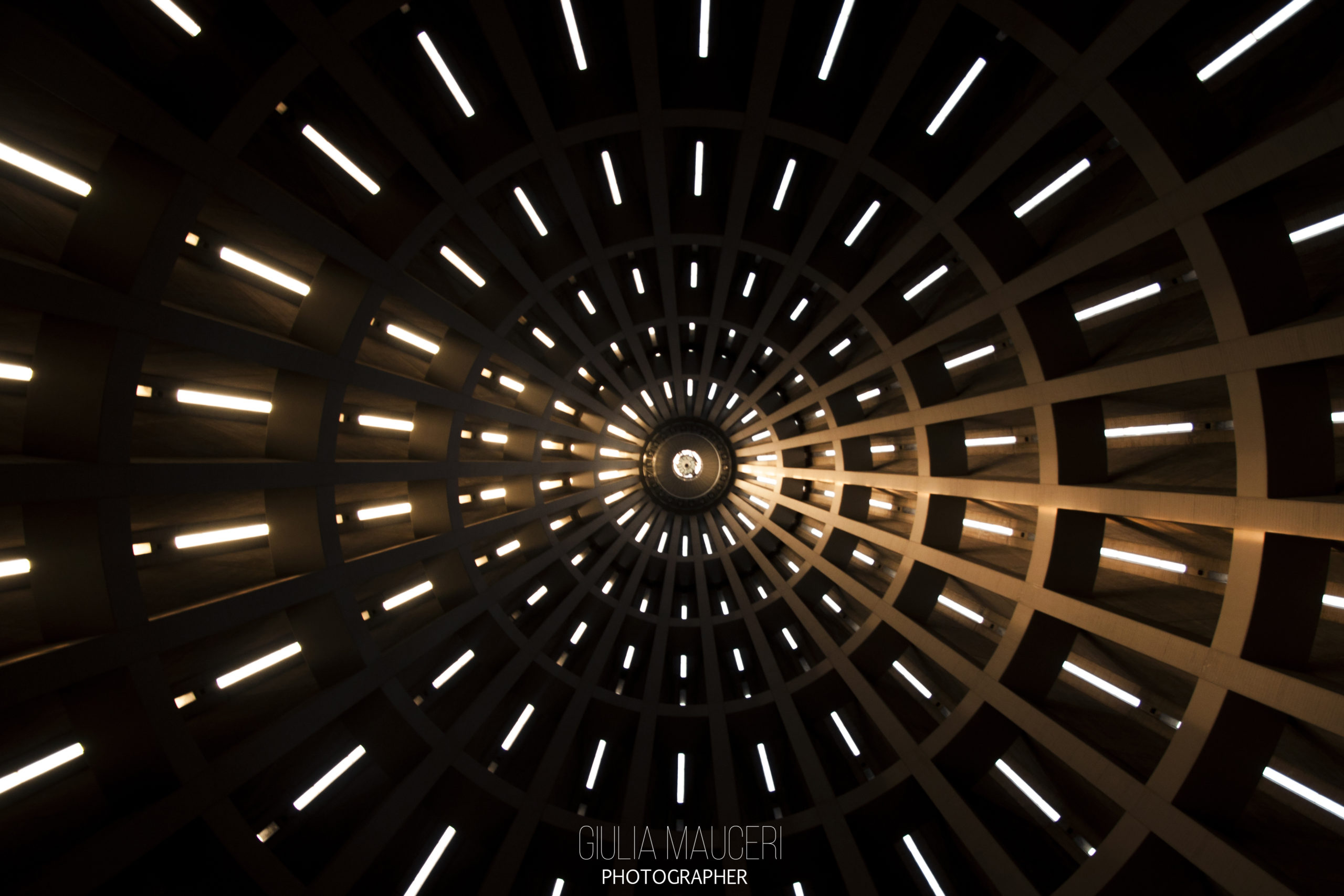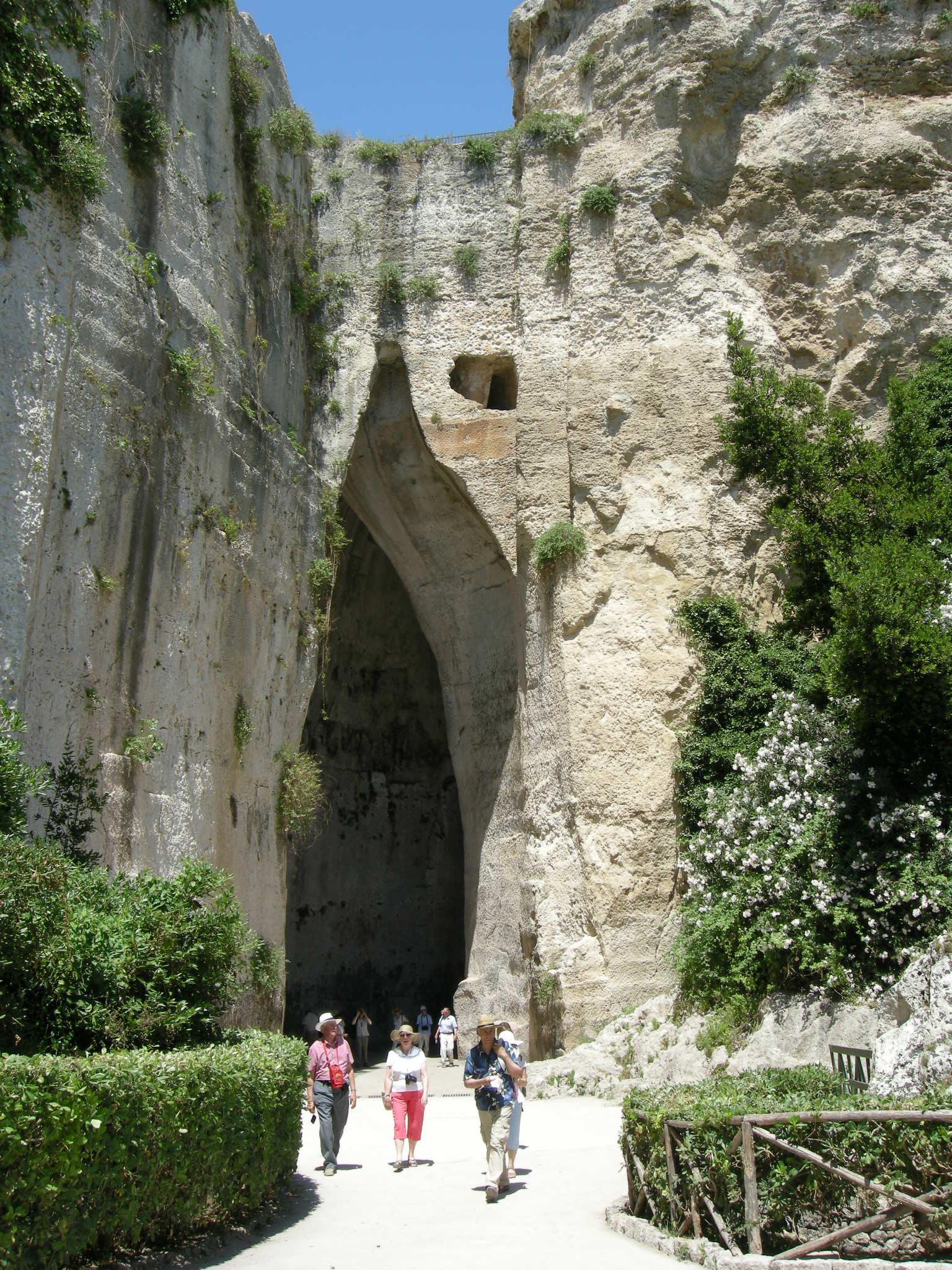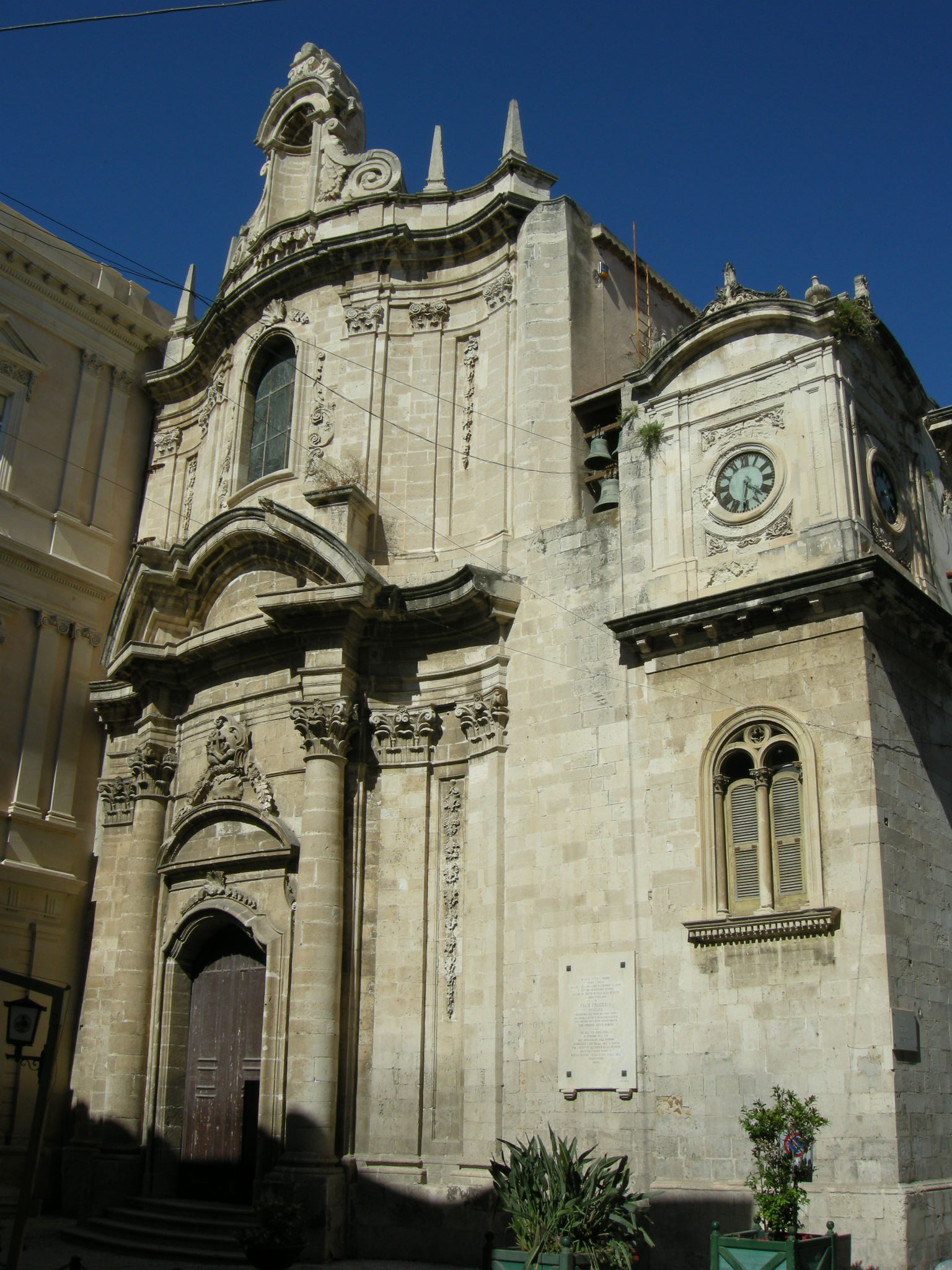The Sanctuary of Our Lady of Tears is one of the most recent churches in Siracusa, it was built in memory of the Miraculous Tear of the Virgin Mary. The beginning of its construction dates back to 1966 and was completed in 1994.
The tearing would have occurred in via degli Orti di San Giorgio al n°11
in Syracuse (now accessible), from 29 August to 1 September 1953 at the home of two spouses Angelo Iannuso and Antonina Lucia Giusto. At that time the woman, pregnant with her first child, had a difficult pregnancy with frequent sight losses and during the night of 29 August she was struck by an epileptic attack, she lost consciousness and her sight disappeared completely and then returned to normality at 9.00 the following morning, when Antonina saw tears on the face of a plaster Madonna who kept placed above the bed. Today, this Madonna is kept on the main altar of the Sanctuary.
The half bust in enamelled plaster (23×28 cm), mounted on an opal glass support, depicting the Madonna showing her Immaculate Heart, was a wedding gift that the couple had received the same year.
After the first tearing, 58 more followed, despite the absence of TV at that time, through radio and newspapers the news quickly spread among the believers who with their continuous visits made home Iannuso a place of constant pilgrimage.
The Church intervened, curious but prudent, and went to Iannuso’s house for a check, and to the amazement of all they witnessed the evidence of the tearing of this Virgin Mary.
At this point, it was requested by the Church itself, a more accurate analysis, then the scientific commission went to the house Iannuso on September 1, 1953, took about a cubic centimeter of the liquid that flowed from the eyes of this half-bust depicting the Madonna; subjected to microscopic analysis, the liquid showed traces of proteins and urates, the same substances that are found in the tears of a child and an adult.
The liquid was classified as “human tears” and after an examination of the plaster picture, the phenomenon was declared scientifically unexplainable.
The pilgrimage continued over the years, making this event more and more famous.
It was decided to dedicate a church to the Virgin Mary in honor of the tearing and for the realization was called an international contest. 100 architects from 17 different countries participated and the winners of the competition were two French architects: Michel Andrault and Pierre Parat.
The project presented and later realized by the two architects, is a work of art that expresses the deep religious feeling of man and symbolizes the tear of the Madonna.
This church called “the Sanctuary of Our Lady of Tears” is one of the most original of its kind in the world.
Its shape is subject to various interpretations, the architects proposed to structurally realize the concept of elevation to God, in fact the plan of this structure with its circularity is thought to represent humanity itself and with the rise of the ribs of this majestic structure reaching greater intensity of light, it stretches out to God.
The Sanctuary is 103 meters tall, 94.30 meters from the floor and has a capacity of 11,000 standees and about 6,000 seats.
At the top of it, there is a statue, in gilded bronze, of the Virgin Mary designed by Francesco Caldarella, which reproduces in full the image present in the painting of the Virgin Mary who wept. This statue, now considered an icon of the city, thanks to its height is visible from nearly all points of the city itself and also from neighboring countries. The statue is approximately 3 meters high and weighs about 600 kg, the Virgin Mary is depicted with her arms outstretched towards the main entrance of the city of Syracuse, as if to welcome the faithful in the house of the Father.
The sanctuary was inaugurated on November 6, 1994 by His Holiness John Paul II (former Pope), invited by the Archbishop of Syracuse, Monsignor Giuseppe Costanzo.
The (upper) basilica, built from 1989, is paved with precious marbles that reproduce a star dedicated to Mary, the morning star that announces the rising sun, which is Jesus.
The Basilica is accessible through a large door made entirely of bronze, the work of the sculptor Giacomo Albano, and represents the door of a sheepfold where they were engraved, in Greek, the verses of the Gospel of John, on the outside is the inscription “I am the door, if one enters through me he will be saved,” while, on the inside is readable the phrase “will enter and exit and find pasture”.
In the inner part of the basilica, we immediately notice the circularity of the structure that presents the environment, the white marble (Lasa) on which the altar is placed, which houses the shrine with Our Lady of Tears, immediately draws the attention of the faithful.
The altar, which presents a square shape, is the work of the sculptor Giancarlo Marchese and is made of two blocks of bronze, he named it “New heavens and new earth” because it aims to express the conclusion of the story and the return of Jesus.
Above the altar there is a precious crucifix dated 1700 and the original half bust that was the protagonist of the tearing in the house Iannuso.
The base of the altar is made of bronze, and is composed of four panels depicting some scenes from the book of the Apocalypse: the throne, the new Jerusalem, the lamb; and on the right, the tree of life, the column and the scroll.
The large table is made of stone from Modica (a Sicilian town) on which is engraved a phrase in Greek: “Christ loved the Church and gave himself for it”.
The Sanctuary is divided into 16 small chapels on two levels, 5 at the sides of the central room, and 11 in the crypt of which we will discuss later.
Those placed in the main part, host the reproduction of the Holy Shroud, the Blessed Sacrament, the Altar of Charity and St. Joseph.
Below the Basilica there is a Crypt, the latter was inaugurated on August 28, 1968, is accessed from 18 entrances and has a capacity of 3,000 seats.
It shows a circular shape with an external diameter of 80 meters, the internal one of 38 meters and a height of 9 meters.
The altar of the crypt is placed on a red granite floor, the presbytery is in a semicircle, here was housed the picture of Our Lady of Tears from 1968 to 1987 and, subsequently, from May 1, 1994 to November 4, 1994.
Inside this crypt, there are several chapels, one of which is used for the celebration of the Sacrament of Reconciliation, another, instead, houses a crib with handmade terracotta sculptures from different eras by craftsmen from the city of Caltagirone, famous for its pottery. A chapel is used, instead, as the “Museum of Vestments”.
The remaining 8 chapels feature large mosaic icons dedicated to the Holy Family, St. Lucia, St. Agatha, St. Corrado, St. Francis, the Crucifix, Saints Peter and Paul and the Sacred Heart of Jesus.
The main altar of the crypt also houses an important burial chamber dating back to the Byzantine period (535 AD – 879 AD), under which there are two small rooms dating back to the Greco-Roman period, near which flows a small stream, the latter unfortunately is not accessible.
The Sanctuary of Our Lady of Tears is surrounded by a botanical park that extends for nearly 17,000 square meters, where there are more than 200 different species of plants: trees, palms, evergreen shrubs, flowering shrubs, various shrubs, flowering herbaceous plants, cacti.
The different species of plants and flowers present, make it a place full of colors throughout the year, colors that are renewed with the passing of the seasons, so as to create an oasis of silence, peace, beauty in which you can meditate.
The entire Park of the Sanctuary was designed by the landscape architect Nino Attardo and also includes service areas: walkways, Via Crucis, Mysteries of the Rosary, Stele della Madonnina, reception area for pilgrims, thus reaching 35,000 square meters.
INFO
Location: Via Luigi Cadorna, 139 – Siracusa
Contacts.: +39 0931 22102
No entrance ticket for the visit
HOLY MASS TIMES CLICK HERE



